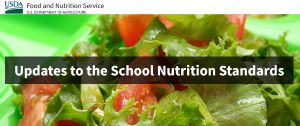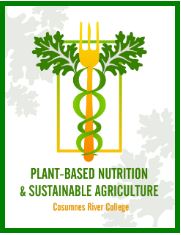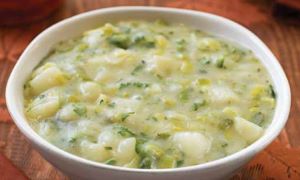Posted on
May 16, 2024 by
The VRG Blog Editor

photo from Sen Saigon
The Vegetarian Resource Group maintains an online Guide to Vegan/Vegetarian Restaurants in the USA and Canada. Here are some recent vegan restaurant additions. The entire guide can be found here: http://www.vrg.org/restaurant/index.php
To support the updating of this online restaurant guide, please donate at: www.vrg.org/donate
Here are some new additions to VRG’s guide:
Ambrosia Veggie House, 1009 4th Ave. SW, Calgary, AB T2P 0K8 Canada
Located in the Avatamsaka Monastery, the Ambrosia Veggie House is a Buddhist and vegan all-you-can-eat buffet several days during the week! If you come on Wednesday, Thursday, or Saturday, the buffet will be available offering a variety of Chinese food. If visiting on Friday, you will be given a set menu to choose from. It includes soups (like vegetable, kimchi, and Sichuan spicy soup), house specials (stir-fried veggie rice, noodles, and udon), and side dishes (like spring rolls, sushi, and boiled dumplings). Come on down to the Ambrosia Veggie House to have a feast like no other!
Life Garden, Carr #2 Km. 139.2, Bo Cerro Gordo, Aguada, PR 00602
Located on road number two, the bright red roof of Life Garden Veggie & Vegan Restaurant will make them hard to miss! They offer a consistently rotating menu where people can find a new alternative to healthy eating. Their breakfast menu includes white rice and vegan bacon, vegetables with quinoa, lentils, and even Creole chicken strips. They have soup of the day, sometimes it’s broccoli or carrot, and also a dessert of the day featuring a variety of bizcocho, sometimes being lemon, almond, pumpkin, or coconut. Occasionally, they bring out their vegan hot dogs, burgers, and pizza. You can also make your own salad and acai bowl. Don’t forget to try their natural juices prepared on the spot without added sugar and water. Check out their Facebook to see the daily menu!
Lulu EthioVegan, 12 E. Franklin Ave., Minneapolis, MN 55404
Starters include 4pc Sambusa (pastry shell filled with brown lentils, onion, garlic, jalapeño pepper, and herbs, served with sweet, housemade dipping sauce), and Foule (crushed fava beans cooked in onion, berbere, tomato, green pepper, and coconut yogurt), served with warm pita bread/white bread. Main courses start with a house salad and include Difin Misir (brown lentils cooked with fresh garlic and ginger, onion, and curry sauce) and Fasolia (string beans, carrots, onions, garlic, and ginger blended with herbs). House Specials include Mushroom Tibs (mushrooms sautéed with onion, garlic, jalapeño peppers, and herbs, served with house salad) and Shimbra Asa (baked chickpeas marinated and slow cooked in spicy homemade berbere sauce, served with house salad). Also offered are salad bowls, pasta, burgers, and desserts, along with hot and cold drinks and smoothies.
More Vegan Café, 4622 N. Main St., Columbia, SC 29203
Appetizers include Cauliflower Bites (BBQ, Carolina Gold, or Buffalo), and Walnut Eggrolls. Main dishes include Rasta Pasta (Caribbean pasta dish with jerk sauce and vegan scallops made from hearts of palm), Lions Mane Steak (served with mashed potatoes and asparagus), and Curry Chickpea Cauliflower over quinoa. There are several raw dishes, including Raw Spaghetti (zucchini noodles with a savory walnut tomato-based sauce) and Kale and Tabouli Salads. There are several drinks, including Kakarot (fresh-pressed carrot, apple, and ginger) and Mother Nature (apple, celery, lemon, cucumber, basil, mint), as well as a smoothie and several desserts such as Carrot Cake with raisins and pecans.
Oh! Dahon, Canal Street Market, 261-263 Canal St., New York, NY 10013
This is a sushi and salad food stall located in the Canal Street Market. Some of their dishes include Miso Truffle Eggplant, Crispy Broccoli, Pad Thai Slaw, Dahon Signature Roll, and more.
Sen Saigon, 150 E. Broadway, New York, NY 10002
When the owners of Sen Saigon embarked on a vegan lifestyle, it literally got their creative juices flowing. They aim to reimagine familiar Vietnamese fare through a vegan lens, but also to share their passion, helping diners discover some lesser known dishes. Located on the Lower East Side, their signature Banh Mi, referring to bread or sandwich, is Lemongrass Tofu Mushroom featuring house-made nut pate, mayo, banh mi sauce, Vietnamese pickles, cilantro, and coriander on a crisp baguette. There’s also a version of this with house-made vegan ham. Soups include Pho Sen Noodle Soup with house-made vegetable broth, mushrooms, tofu, and vegan beef ball, topped with mung bean sprouts, cilantro, onion, Thai basil, and lemon. Hue Spicy Rice Noodle Soup is a similar version in a lemongrass broth with carrots and vegan ham, topped with red and white cabbage, banana blossom, most of the same seasonings as the Pho but with the addition of Tia To (a peppery herb) and lemongrass chili sate. Sen Signature Salad blooms with Lotus root, cucumber, red pepper, carrot, and herbs, tossed with a vegan fish sauce dressing and crushed peanuts. Both Spring Roll options offer fried rice paper, wood ear mushroom, taro, and onion with sweet and spicy dipping sauce, but the Root Vegetable version also contains sweet potato and mung bean. The Corn Spring Roll has corn and fried shallot. Both Lemongrass Mushroom and Lemongrass Tofu Summer Rolls showcase fresh rice paper with peanut hoisin dipping sauce. Vermicelli Noodle Bowl with Spring Rolls includes some of the same ingredients plus shiitake flower mushroom. If you’re a fan of flan, they offer a nut-free, gluten-free, caramel vegan custard version for dessert.
The Vegan Cheese Lady Café, 605 Main St., Lafayette, IN 47901
For those who lament the difficulty of finding good vegan cheese, The Vegan Cheese Lady has come to your rescue. With a menu featuring made-from-scratch vegan meats and artisan cheeses, this café should be your go-to place. The cheeses are made from soy, cashew, or almonds and are all gluten-free. The meats do contain wheat. If you are looking for some simple cheesy goodness, try the classic grilled cheese. If you desire something a little heartier, there is Julieann’s Crunchy Wrap (made with smashed black beans, taco-seasoned vegan beef, vegan cheddar, and salsa and jalapenos), or the Chickun Salad Wrap (shredded vegan chicken with mayo, mustard, relish, bell peppers, and vegan cheddar wrapped in a tortilla). Dessert options may include a pineapple sorbet or a banana ice cream. Make sure to check the café’s Facebook page for menu updates and specials. They sometimes offer live music in the evening.










